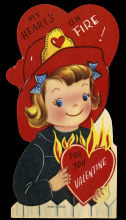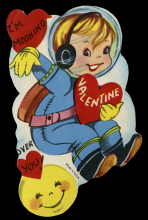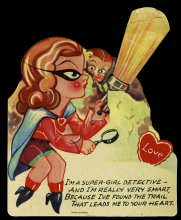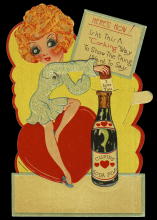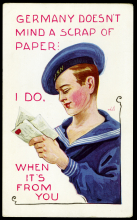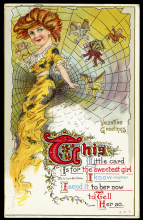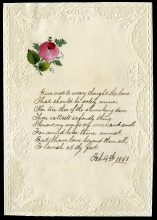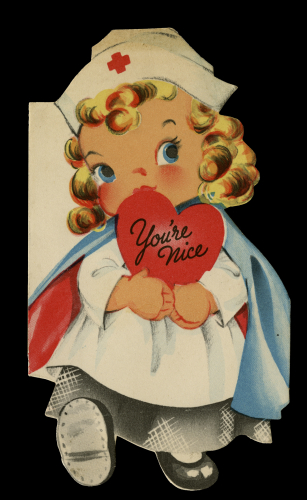
Valentine cards represent love, affection, and friendship, but they can also tell us a great deal more.
Below are seven images from the collections -- two postcards from the Robert F. Metzdorf Papers, one letter from the William Henry Seward Papers, and a several images of children’s valentines from a collection of mid-20th century American greeting cards.
The juxtaposition of items from a renowned bibliographer, appraiser, collector, scholar, and curator (Metzdorf), and from one of RBSCP’s most used and valued collections (Seward), with a few anonymous children’s valentines might seem unexpected. Some might say that the latter are not rare at all – but we would say that the term “rare” is a moving target.
“Ephemera” is a term that represents items like these greeting cards. Cheap, throw-away, insignificant. Or are they? Items such as these can sometimes be the rarest or scarcest of all, precisely because they were not meant to be saved. Often printed on acidic paper such as newsprint, and often thrown away within days of their use, these valentines provide a fascinating glimpse into the mindset, traditions and attitudes of mid-20th century Americans.
Through these simple greeting cards, we can pose questions and prompt conversations that relate to race, gender, class, sexuality, and much more. Love and ephemera may be fleeting, but through the work of librarians and archivists, and through the eyes and minds of researchers, we are able to reflect on the past, explore the evidence we have, ask questions, develop theories, and learn more about where we’ve been, and where we are going.
What do you see? What do these images represent? How might one of these images start a dialog or illustrate a point? The questions, like the answers, are endless.
These materials were on display in 2017 as part of a “Pop-Up” exhibit and event for Valentine’s Day. Learn more about Special Collections at our website.

